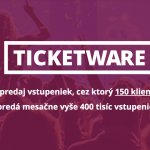Culturefighter is a visualisation tool and an online knowledge database of cultural and creative industries in Europe. It includes structured interviews with the most relevant and best industry leaders who share case studies and experiences (both positive and negative), the formation of cultural strategies and policies, and economic and social contexts. Culturefighter is an interactive textbook for cultural operators from cultural centres, incubators, factories, initiatives and organisations, universities, representatives of local governments and Ministries managing culture and regional development.
Cultural operators can learn and get inspiration from industry leaders and pioneers, choose the model or structure of their organisation or event, find new sources of funding, and networking opportunities at national and international level.
Local government representatives can compare their cultural strategies with other cities and best available examples, get inspired by creative industries in other regions, or set up structural support for culture in their city or area.
Representatives of the Ministries can obtain background material to improve their grant programmes and funding or invest in the future development of culture and thus remain competitive with countries with a strong cultural and creative industry.
Universities can develop their offer and study programs towards the needs of the cultural and creative industries and find ways to work with innovators, entrepreneurs, the private sector and cultural operators.
This is the current state of the seven-year project, which, at its very beginning in 2010, had a different form. At that time, it was decided that the city of Košice would share the title of the European Capital of Culture with the French city of Marseille throughout 2013 and it was clear that it will be the most complex and the most sophisticated cultural project in the history of the Slovak Republic.
Organisation Východné pobrežie and a film production company partizanfilm received support from the European Capital of Culture preparatory team to jointly visit European cities that have hosted this project in the past and have gained as much information as possible about the benefits as well as difficulties of such a project for the city itself, its individual areas, inhabitants or subcultures.
In the first phase, eight interviews were conducted, which were broadcast in the form of eight-minute sessions in public television. However, the interviews contained a wealth of vocational and specialised information that did not get into the session and could have been useful not only for the project’s authors but also for the wider audience. In parallel with the collection of additional material, we began building an architecture of a contextual website that could serve as a specific source of information for people, organisations and companies working in the cultural and creative industries.
In 2012, after a few drafts, we presented a website that offered material that we acquired divided into categories and subcategories.
The growth of the content created also increased the scope of Culturefighter. The original eight interviews showed that the European Capital of Culture project is only the most distinct part of a very complex organism of the cultural and creative world of the individual cities. Each conversation surfaced new topics such as the transformation of cities, cultural funding, subsidy programmes, international networking, and similar. Therefore, it was necessary to categorise the growing content in order for the end-user being able to identify it and not to get lost in it.
We divided the content into seven basic categories and twenty-four subcategories.
We tried not only to explain the concept of creative industry through interviews with the protagonists, but also to search for relevant critics.
Cultural centres, factories, incubators and initiatives were mapped particularly through their stories, but their financial and organisational schemes and structures, international networking and local recognition were also important.
We mapped the structural support of culture and government strategies at local, regional, national and European levels.
Partnerships and networking were gradually expanded to the existing Trans Europe Halles and the European Creative Business Network. These were also instrumental in organising and creating the content.
Major cultural events were the area where we started but quickly realised that there are other major events outside the European Capital of Culture project, such as the EXPO, the Unesco Creative Cities Network or the Olympic Games, and various festivals and medium-sized events that affect the cultural, social and economic life of cities or their parts.
The impacts of the cultural and creative industries were topics we followed around the UK, Scandinavia, Germany or the Netherlands, where industry-specific experience has been long-standing and offers an interval of one or two decades, and many tools to improve and adjust strategies, legislation and other details.
Town regeneration is the category that was added as the last one. The cultural and creative industries do not span only within the limits of soft processes, but change streets, neighbourhoods and entire cities.
We documented, categorised and transcribed all of these examples. Our aim was to create a database not only of successful and positive examples, but of realistic and feasible examples including examples of problems with realisation.
As we chose the English language for communication, the content carries this language too. A living organism, such as the cultural and creative industry is, has naturally led us to international cooperation and international communication.
Over the course of the project, we visited nearly 50 cities, where we conducted nearly 80 interviews. In addition to publishing content on the web in a structured form, we also used outputs of a separate public television programme, collaborated with a monthly Slovak financial magazine, and presented the project at international conferences and meetings.
In 2014, we consulted Cutlurefighter’s expansion into the United States with a production company that specialises in selling online educational content for creative professionals, but in view of the substantial culture funding differences at both the continents, we decided not to extend the scope to such a breadth.
Culturefighter has been funded from a number of public sources during its existence and has been supported by the Ministry of Culture of the Slovak Republic, the European Capital of Culture Košice 2013, the K13 – Cultural Centres of Košice, the City of Košice and the British Council in Slovakia. The non-financial support for consultations, logistics, programming, translation was obtained from individual members of Trans Europe Halles and the European Creative Business Network, Tatran Editing and Parallaq.
The next step of Culturefighter project is to focus on new and emerging areas of cultural and creative industries such as creative economy and social design. We would like to return to the already visited places after a few years and find out if they have been able to accomplish their visions, whether they have shifted, either in a positive or a negative sense. We would like to add to the category of major cultural events studies from specific events such as Documenta, Ars Electronica or Art Basel, and we would like to add to the already comprehensive content areas for recommended literature, media, websites and other platforms to make the project a relevant source of information on cultural and creative industry in Europe.









Add Comment